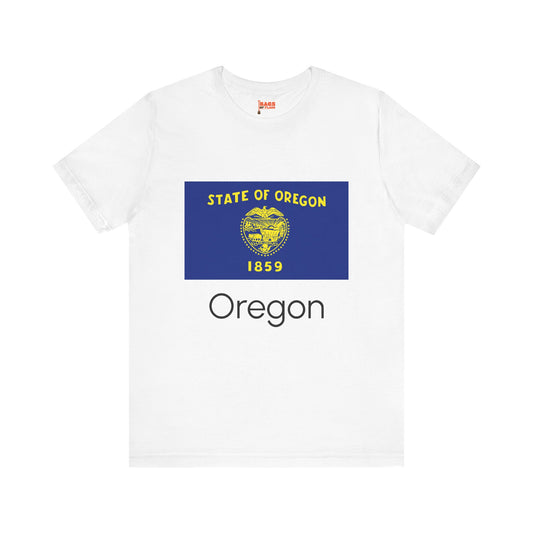-
Oregon Backpack
Regular price $59.79 USDRegular priceUnit price / per -
Oregon Trucker Cap
Regular price $14.90 USDRegular priceUnit price / per -
Oregon Leather Patch Hat
Regular price $18.85 USDRegular priceUnit price / per -
Oregon Pillow
Regular price $22.65 USDRegular priceUnit price / per -
Oregon Mug
Regular price $11.65 USDRegular priceUnit price / per -
Oregon Inspired Sweatshirt
Regular price $34.15 USDRegular priceUnit price / per -
Oregon Flag Sweatshirt
Regular price $34.15 USDRegular priceUnit price / per -
Oregon Sweatshirt
Regular price $34.15 USDRegular priceUnit price / per -
Oregon Hoodies
Regular price $34.40 USDRegular priceUnit price / per -
Oregon T-shirts
Regular price $22.79 USDRegular priceUnit price / per -
Oregon Flag Hoodies
Regular price $34.40 USDRegular priceUnit price / per -
Oregon Inspired Hoodie
Regular price $34.40 USDRegular priceUnit price / per -
Oregon Inspired T-shirt
Regular price $22.79 USDRegular priceUnit price / per -
Oregon Flag T-shirts
Regular price $22.79 USDRegular priceUnit price / per
Collection: US State: Oregon OR flag
With its unique design and vibrant colors, the Oregon flag has a rich history that dates back to its adoption in the late 19th century. We will delve into the flag's historical context, the symbolism behind its design, and its current relevance in Oregon.
Overview of the Oregon Flag's Design and Colors

Distinguished by its deep navy blue field and striking gold elements, the Oregon flag presents a visually compelling emblem that encapsulates the state's identity and heritage. Central to the flag's design is a gold shield encircled by 33 stars, a nod to Oregon's admission as the 33rd state in the Union. This emblematic centerpiece is flanked by the state's name and year of statehood, rendered in bold gold.
The choice of navy blue and gold as the flag’s primary colors is deliberate, with the former symbolizing the vast skies and expansive waters that characterize Oregon's landscape and the latter representing the state's abundant natural riches and prosperity. Unique among state flags, Oregon's standard also bears a reverse side featuring a beaver, the state animal, adding a layer of local significance. This two-sided design underscores Oregon's commitment to its natural environment and historical symbols, creating a flag that is as meaningful as it is visually distinctive.
Historical Context of the Oregon Flag
The Oregon flag is distinguished among state flags, with its inception in the early 20th century. Unlike many of its counterparts, the flag's design was not solidified until the mid-1920s, well after the state entered into the Union. This delay allowed for a reflection on what symbols and colors would best encapsulate Oregon's identity, culminating in the official adoption of the flag on February 26, 1925. This decision was influenced by the broader historical context of the time, including the state's rapid development and the desire to create a symbol that could unify its diverse population.
Including the beaver on the reverse side of the flag, adopted from the state seal, serves as a nod to Oregon's rich natural resources and the pioneering spirit of its early settlers. This choice is directly linked to the state's origins and burgeoning industry, capturing the essence of Oregon's past while paving the way for its future. The flag's adoption marked a significant moment in Oregon's history, symbolizing a collective sense of pride and identity among its residents.
Symbolism Embodied in the Flag
The symbolism of the Oregon flag weaves a deep narrative that connects the state's environment, history, and aspirations. The navy blue and gold capture Oregon's physical beauty—from its vast skies and waters to its rich natural resources—and symbolize prosperity and innovation. The central shield acts as a guardian, encapsulating the state's commitment to protect its values and lands. Surrounding this shield, the 33 stars cast a unifying glow, representing Oregon's place as the 33rd state to join the Union, highlighting unity and state pride.
At the heart of the flag lies the imagery of the Pacific Ocean, mountains, forests, and the setting sun, each element a testament to Oregon's diverse geography and the pioneering spirit of its inhabitants. These symbols echo the state's journey from its early settlement days to its current status, emphasizing progress and the importance of nature in Oregonian life.
The reverse side of the flag, featuring a beaver, speaks volumes about Oregon's relationship with its natural world. This dynamic and resilient creature mirrors the character of Oregon's people and their sustainable use of natural resources. This duality of design—reflecting both the state's heritage and its natural environment—ensures that the flag of Oregon remains a poignant emblem for its people, encapsulating the essence of their state in every fold.
Current Relevance of the Oregon Flag
Today, the Oregon flag maintains a visible presence, is prominently featured in official settings, public schools, and various ceremonial functions, and is symbolic of the state's history and heritage. Its display during significant events, from national celebrations like the Fourth of July to somber observances on Veterans Day, underscores its role as a symbol of unity and remembrance for Oregonians. While the flag symbolizes state pride and identity, it has also sparked discussions regarding its representation of Oregon's diverse community.
Debates have emerged around the flag’s design and symbolism, prompting a broader conversation on inclusivity and the evolution of state symbols to reflect the entirety of Oregon's population. These discussions highlight the flag's enduring relevance and indicate a dynamic engagement with the state's identity and values. As such, the Oregon flag continues to be not just a static emblem of the past but a living symbol inviting ongoing dialogue about what it means to be an Oregonian today.
Additional Facts About the Oregon Flag
- Unique among U.S. state flags, Oregon's flag is the only one with different designs on each side: one side showcases the state shield, while the reverse displays a beaver, the state animal.
- Official protocol for the flag’s display dictates that when hung vertically, the obverse side (with the shield) should face the flag’s right, ensuring that the state's name reads correctly from left to right.
- The flag's dimensions hold significance; the official ratio is 3:5, a standard that aligns with the proportions of the American flag, reflecting Oregon's integration and pride within the United States.
- A special flag etiquette unique to Oregon requires that the state flag should never be flown above the U.S. flag, emphasizing the supremacy of the national emblem while still honoring state pride.
- In 2010, Oregon celebrated its 150th anniversary as a state, and commemorative flags were produced to mark the occasion. These flags featured the same design but included a special element to signify the sesquicentennial celebration, underscoring the flag's role in marking historical milestones.
- Efforts to ensure the flag's visibility and proper representation have led to the creation of guidelines for its use in digital formats, ensuring the flag's integrity is maintained across various media.




























